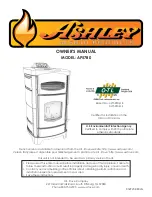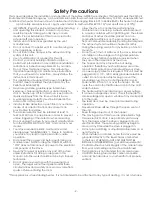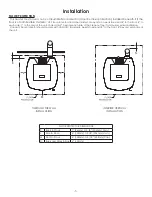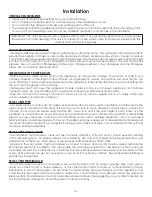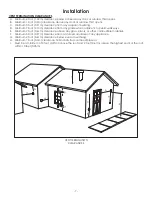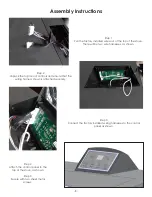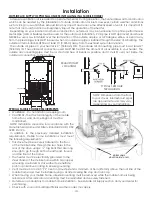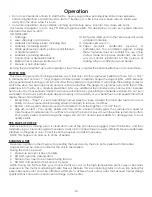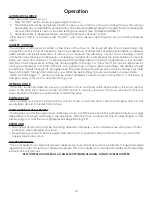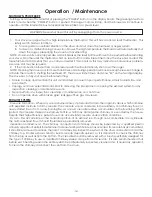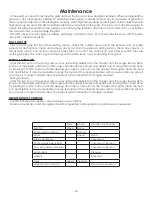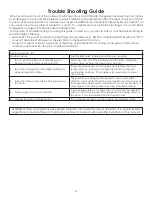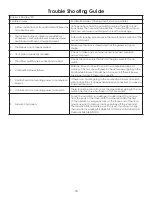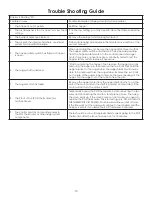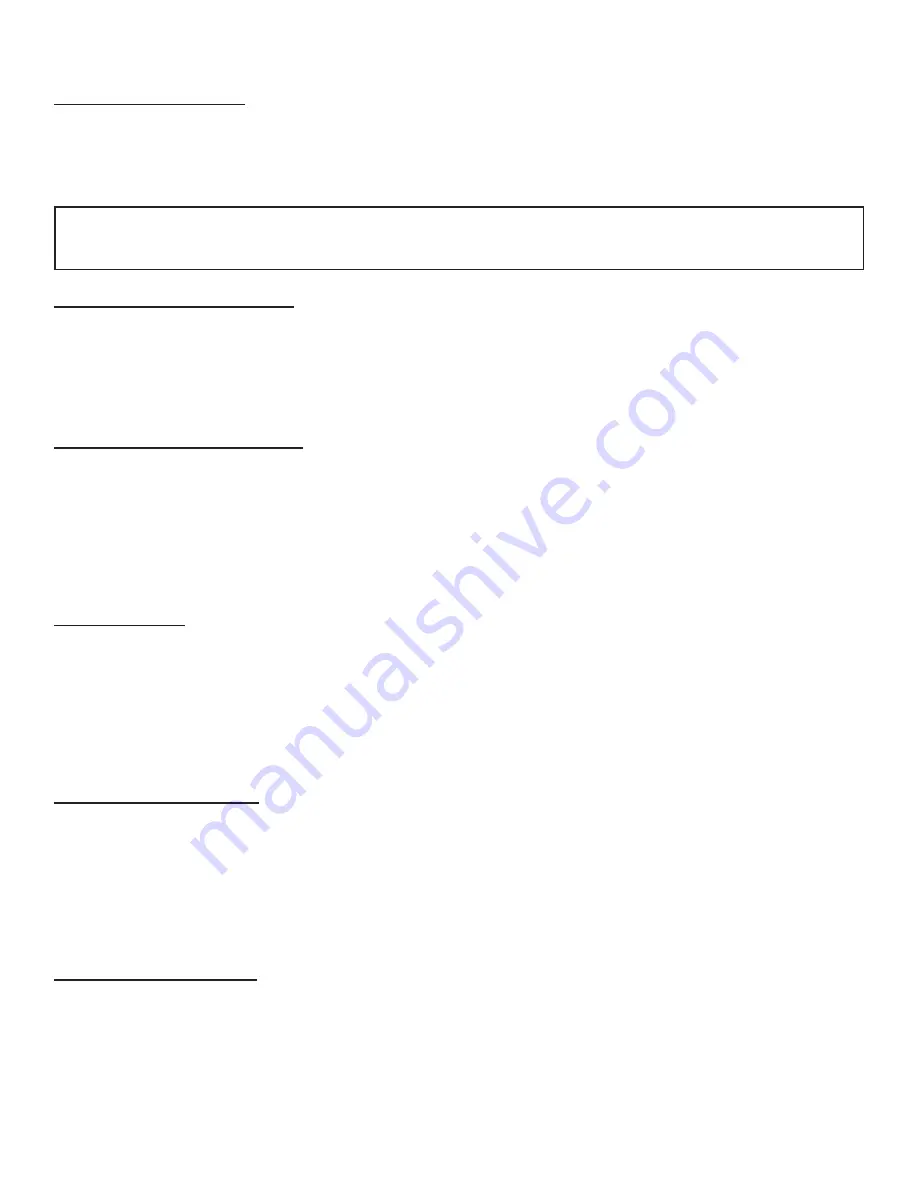
-
6
-
VENTING REQUIREMENTS
• Install vent at clearances specified by the vent manufacturer.
•
Do not connect the pellet vent to a vent serving any other appliance or stove.
• Do not install a flue damper in the exhaust venting system of this unit.
•
The following installation guidelines must be followed to ensure conformity with both the safety listing of this
stove and to local building codes. Do not use makeshift methods or compromise in the installation.
MAXIMUM VENTING DISTANCE
Installation MUST include at least 3-feet of vertical pipe outside the home. This will create some natural draft to
reduce the possibility of smoke or odor during appliance shutdown and keep exhaust from causing a nuisance
or hazard by exposing people or shrubs to high temperatures. The maximum recommend vertical venting height
is 12-feet for 3-inch type “PL” vent. Total length of horizontal vent must not exceed 4-feet. This could cause back
pressure. Use no more than 180 degrees of elbows (two 90-degree elbows, or two 45-degree and one 90-degree
elbow, etc.) to maintain adequate draft.
IMPORTANCE OF PROPER DRAFT
Draft is the force which moves air from the appliance up through the chimney. The amount of draft in your
chimney depends on the length of the chimney, local geography, nearby obstructions and other factors. Too
much draft may cause excessive temperatures in the appliance. Inadequate draft may cause backpuffing into
the room and ‘plugging’ of the chimney.
Inadequate draft will cause the appliance to leak smoke into the room through appliance and chimney
connector joints. An uncontrollable burn or excessive temperature indicates excessive draft.
Take into account the chimney’s location to insure it is not too close to neighbours or in a valley which may
cause unhealthy or nuisance conditions.
PELLET VENT TYPE
A UL listed 3-inch or 4-inch type “PL” pellet vent exhaust system must be used for installation and attached to the
pipe connector provided on the back of the stove (use a 3-inch to 4-inch adapter for 4-inch pipe). Connection
at back of stove must be sealed using Hi-Temp RTV. Use 4-inch vent if the vent height is over 12-feet or if the
installation is over 2,500 feet above sea level. We recommend the use of Simpson Dura-Vent® or Metal-Fab®
pipe (if you use other pipe, consult your local building codes and/or building inspectors). Do not use Type-B
Gas Vent pipe or galvanized pipe with this unit. The pellet vent pipe is designed to disassemble for cleaning and
should be checked several times during the burning season. Pellet vent pipe is not furnished with the unit and
must be purchased separately.
PELLET VENT INSTALLATION
The installation must include a clean-out tee to enable collection of fly ash and to permit periodic cleaning
of the exhaust system. 90-degree elbows accumulate fly ash and soot thereby reducing exhaust flow and
performance of the stove. Each elbow or tee reduces draft potential by 30% to 50%.
All joints in the vent system must be fastened by at least 3 screws, and all joints must be sealed with Hi-Temp
RTV silicone sealant to be airtight. The area where the vent pipe penetrates to the exterior of the home must
be sealed with silicone or other means to maintain the vapor barrier between the exterior and the interior of the
home. Vent surfaces can get hot enough to cause burns if touched by children. Noncombustible shielding or
guards may be required.
PELLET VENT TERMINATION
Do not terminate the vent in an enclosed or semi-enclosed area, such as; carport, garage, attic, crawl space,
under a sun deck or porch, narrow walkway, or any other location that can build up a concentration of fumes.
Termination in one of these areas can also lead to unpredictable pressure situations with the appliance, and
could result in improper performance and/or malfunction. The termination must exhaust above the outside air
inlet elevation. The termination must not be located where it will become plugged by snow or other materials. Do
not terminate the venting into an existing steel or masonry chimney.
IMPORTANT: This unit is equipped with a negative draft system that pulls air through the burn pot and pushes
the exhaust out of the dwelling. If this unit is connected to a flue system other than the way explained in this
manual, it will not function properly.
Installation

